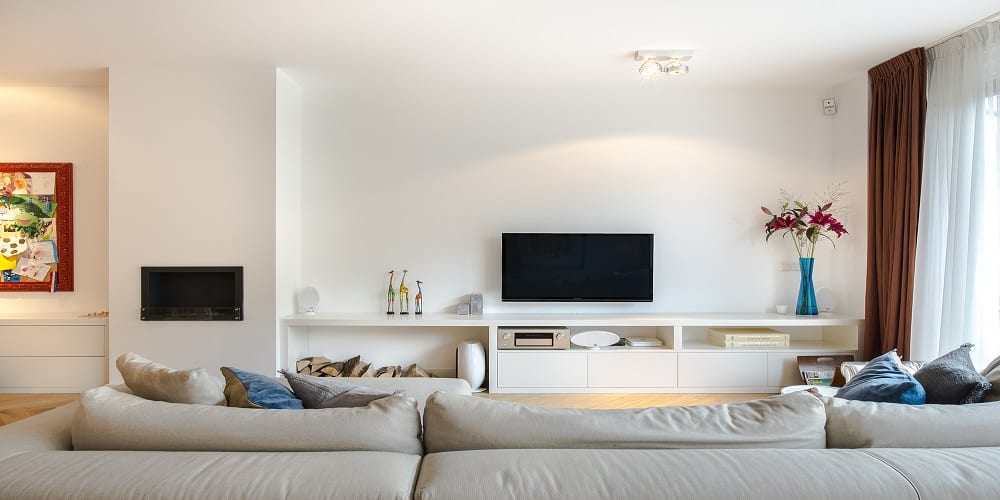Want a plasterer to give your home a good once-over? By hiring an experienced plasterer, you will soon enjoy beautifully finished walls and ceilings, the perfect basis for literally any interior style. Renoca gives you independent information on prices and tips on how to find the best plasterer.
Favourable plasterer wanted: the costs
In your search for a plasterer, price is of course an important element. A plasterer charges a price per m2. For the most part, the price depends on the type of plastering you want to add to your walls. The overview below shows the different types of plastering with the corresponding average prices.
| Type of plastering | Average prices per m2 of plastering, incl. material, £ 23 |
|---|---|
| Sier plaster | £ 12 – £ 23 |
| Ceiling plastering | £ 5 – £ 23 |
Find the best specialist for your project and get free quotes.
Start
Want more price information on hiring an experienced plasterer? Then check out our price guide: plasterer prices.

Different types of plastering
Have you been looking for a plasterer before? If so, you’ve probably seen that the price depends on the type of plastering. Below you can read what the different types of plastering entail.
- Spackling: Spackling is the most economical form of plastering. This type of plastering owes its low price to the method used. The plasterer applies spray paint using a spraying machine and thus works particularly efficiently. Have spackle plaster applied immediately in a colour of your choice. This type of plaster is used to give your walls or ceilings a light granular structure.
- Decorative plaster: Decorative plaster is a more decorative finish for your walls and ceilings. There are various types, each providing a different stucture on the wall. The plasterer applies the decorative plaster immediately in your desired colour, so you don’t have to paint. Decorative plaster is a collective name for a variety of decorative plasters, examples of which are: spachtelputz, rustic plaster and marmor plaster.
- Rap and plaster: Want a plasterer to make a wall completely smooth so you can wallpaper or paint it? Then opt for roughcast or plaster. A plasterer uses rough or uneven surfaces to make them flat and smooth. With plaster, the plasterer applies a layer of plaster between 7 millimetres and 5 centimetres thick. If the plasterer applies a thinner layer, this is called plaster.
The types of plasterwork listed above are the most common types of plasterwork. However, a plasterer will also carry out more special forms of plastering for you with love and are becoming increasingly popular. For example: Concrete Ciré, tadelakt, clay plastering, microcement and micro concrete.
Tips for finding a suitable plasterer
Beautiful, clean walls are the finishing touch for any home. We give you 3 tips on how to find the plasterer who offers you the best quality at the best price.

- Request warranty conditions:
Plasterer wanted? Ask about the warranty conditions. On average, a 5-year guarantee is offered on indoor plastering and 3 years on outdoor plastering. - Look for seals of approval:
Ask if the plasterer holds seals of approval. They must meet strict requirements in terms of expertise, quality and warranty to qualify for a seal of approval. 2 important quality marks are:
– NOA-Afbouwgarantie: This quality mark assures consumers of high quality plasterwork. The plaster does not crack (unless this is caused by the effect of the substrate) and defects are remedied free of charge.
– Stuckeur: With a company with this quality mark, you can assume that the plasterers are guaranteed to have up-to-date knowledge and that the company charges prices in line with the market. - Take advantage of low VAT:
Did you know that if your house is more than 2 years old, you only have to pay 9% VAT instead of 21%? The low VAT rate applies to both the materials and the plasterer’s labour costs. Is your house only 22 months old and would you like to plaster it? Then wait 2 months before plastering and save on the costs.
Advantages of using a plasterer
You have been looking for a plasterer because you want a nice smooth wall and/or ceiling, but what are the specific advantages of outsourcing this project?
- Personal advice: Above you already read about the differences between some types of plastering, but the information you read is not focused on your personal situation and any special wishes you may have. It is wise to seek help from a plasterer. A plasterer will look at the style of your home and the condition of the wall, discuss your requirements and then provide you with personal and professional advice.
- Quality Guaranteed: You should see having your home plastered as an investment. The last thing you want is plastering that will come loose or show other damage within a year. Get the plastering done right away by a professional plasterer and avoid double costs. Plastering is skilled work and definitely not an easy project for the average do-it-yourselfer.
- Save time and mess: Plastering your house takes time. And let’s face it, time is precious. Use your free time for nice things and let a plasterer help you out. Thanks to his years of experience, the project will be done in no time. Because the plasterer will gladly take away any waste for you, you are left without any worries.
Find the best professional for your project and receive free quotations.
Start